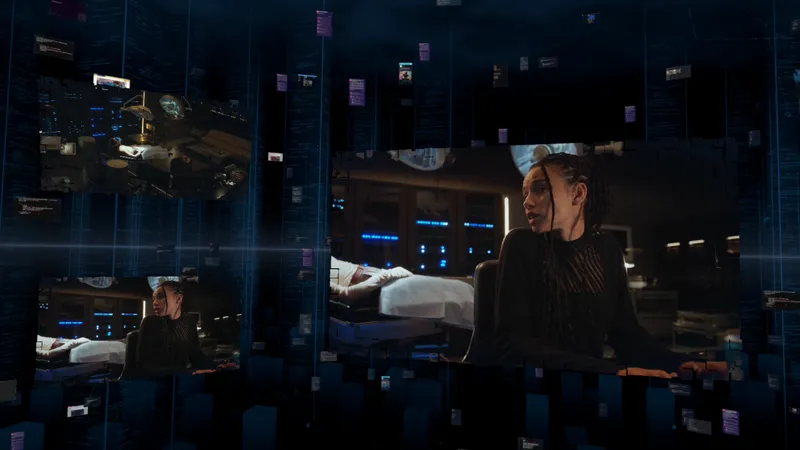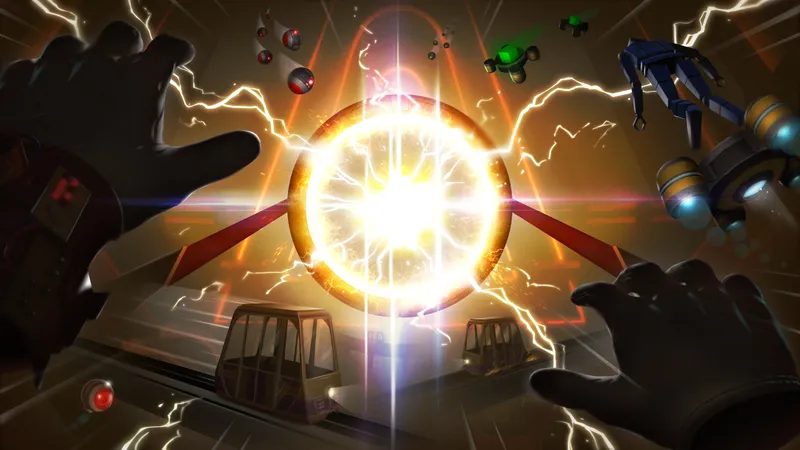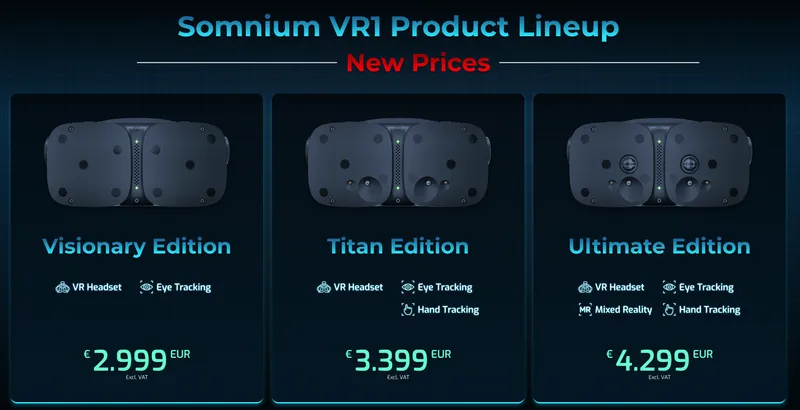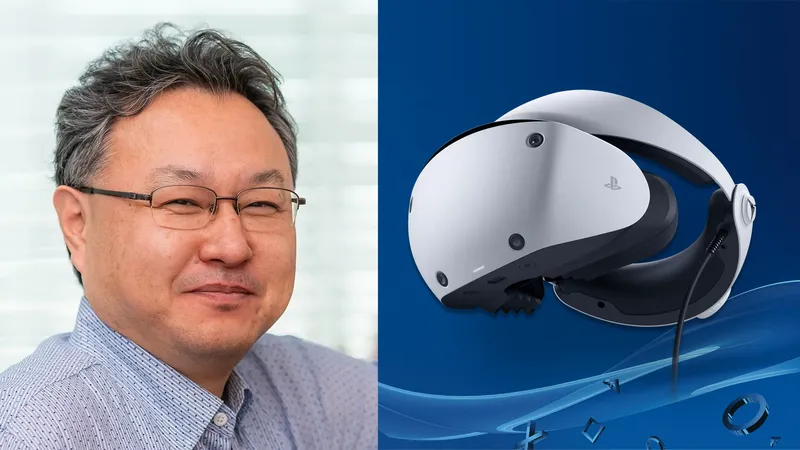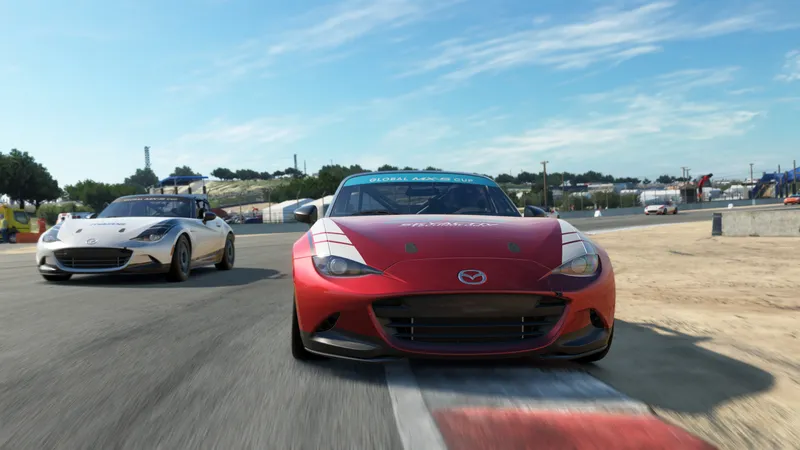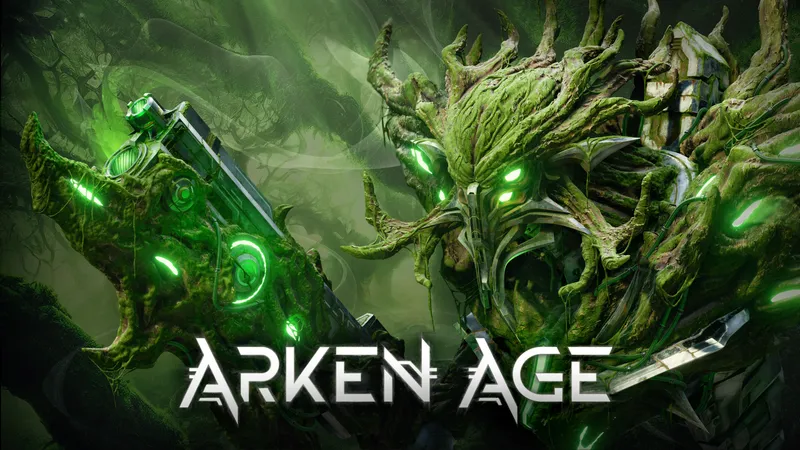At the International Association of Amusement Parks and Attractions (IAAPA) trade show in Orlando, 3D Live and MediaMation showcased a brand new motion simulator virtual reality ride called Ion Torq. Developed by 3D Live Axo using Epic Games’ Unreal Engine 4 technology, the experience introduces a brand new virtual reality video game that seamlessly connects with full-sized ATVs that have been customized to authentically replicate the in-game driving action.
Nathan Huber, co-founder and CEO of 3D Live, told UploadVR the battle racing game has been designed to thrust players into the middle of a battle between giant robots and aliens. Playing as humans who are trying to stay alive, players will fight drone robots and giant mechs.
“You have a driver with gas pedal, brake and steering wheel and a gunner with a head-mounted tracking target and gun,” Huber said. “He’s keeping you safe and helping to destroy the competitors as you battle robots and aliens.”
There’s one area of the level where you drive through labs where aliens are being dissected, and another portion which offers a glimpse outside at the massive battle happening around you on this planet, where you’re escaping a station before it’s completely destroyed.
The game combines cooperative play as the driver and gunner must work together against the in-game foes, as well as competitive play against the other human-controlled drivers.
The single level beta of Ion Torq on display at IAAPA was created by 3D Live Axo in just eight weeks. The final full game will be completed by the middle of next year.
The multiplayer game has been designed for as many as four ATVs to be linked together. Each ATV holds two players with one driving and the second manning a built-in gun. The ride incorporates 4D elements like wind, which both acts as a further immersion of the in-game action and also helps to combat any type of motion sickness. The game is demoed on the show floor with a single CFMOTO vehicle using two Oculus Rifts with gameplay running at 90 frames per second. But final production models will use a variety of real ATVs, including Polaris, and the current focus on the hardware side is HTC Vive.
One of the things that really makes Ion Torq stand out, according to Huber, is that the experience features a 25 foot wide by 17 foot high 3D LED screen that the company currently manufactures for concerts. The screen was first used by 3D Live in the Mass Effect: New Earth ride at California’s Great America, which opened earlier this year.
“The 3D LED features holographic 3D imagery that allows spectators and people waiting in line for the ride to experience what the players wearing the headsets are seeing,” Huber said. “When a giant robot arm comes out over the ATVs in the game world, it also reaches out into the audience.”
Huber said the one issue VR experiences have always had is offering those not inside the headset world a 2D view of the action. This giant screen serves as a true window into the VR world.
This marks the third collaboration between 3D Live and MediaMation. In addition to creating an 84 motion seat theater for the Mass Effect ride, the companies collaborated with AMD and Dell to build Cry Out: The Lonely Whale Experience for the HTC Vive, which was coupled with MX4D motion seat technology.
Dan Jamele, CEO of MediaMation, told UploadVR while Cry Out was a pre-rendered experience on a set motion path, Ion Torq is using reactive VR, which uses real-time input from the players to sync the in-game action with the ATVs.
“It’s better for us to buy and modify an actual ATV and replace all the suspension with our pneumatic actuators, so it’s being controlled by the players,” Jamele said.
MediaMation has spent the past 27 years working on control systems in theme parks and became specialists in motion simulator controls. Over the past decade, the company began manufacturing its own motion bases and has expanded that into a new business with reactive VR.
Jamele said Ion Torq has been a hit at IAAPA with orders taken from theme parks in the Middle East, China and the U.S. MediaMation has a factory in China that will build the ride.
Because of its size, each ATV is on a 6’ by 7’ platform. Larger theme parks and arcades are currently the focus.
Huber said the ride has been designed for family multiplayer fun, which opens it up to a wide audience.
“Using physical ATVs allows anyone to get in and jump into the action because it’s self-explanatory,” Huber said. “You have competition with other players, trying to knock them out as you go through.”






